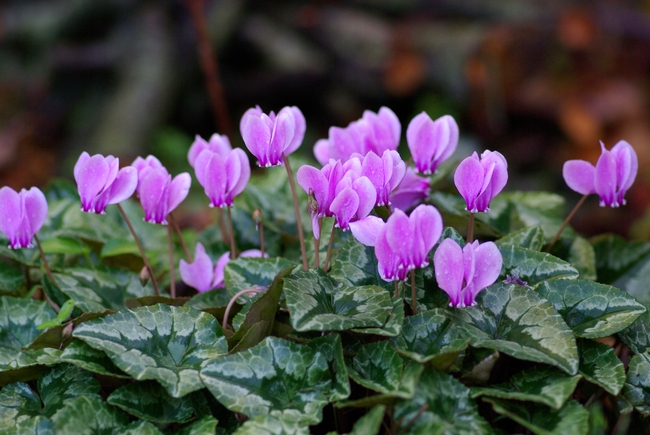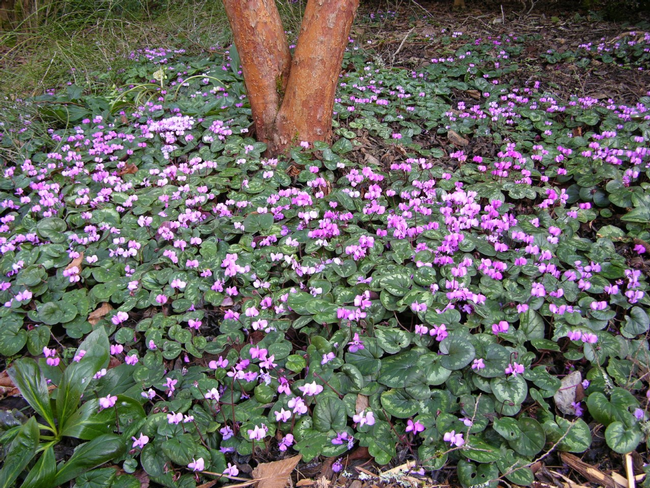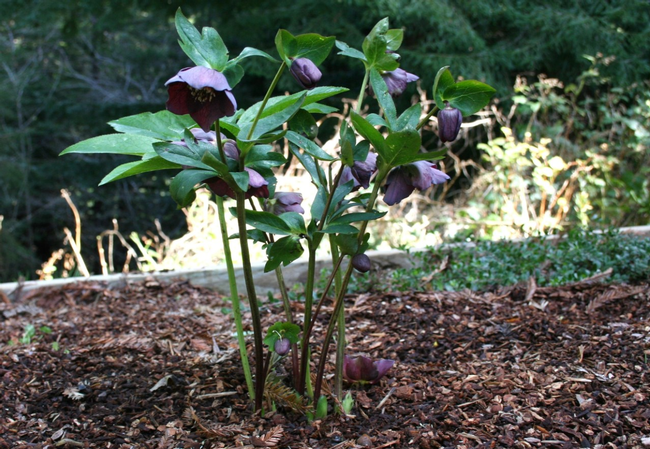By Jeff Oster, UC Butte County Master Gardener, September 29, 2017
It's not uncommon for a garden to seem a bit bare from late fall through early spring, when very little is in bloom. Luckily, hardy cyclamen and hellebores can help fill this gap by providing color from flowers while adding interest from leaf shapes and patterns as well.
Hardy Cyclamen
Cyclamen hederifolium and Cyclamen coum are smalller, garden-adapted relatives of the florist's cyclamen (C. persicum). They are both native to Mediterranean regions, and are the easiest species of cyclamen to grow in the home garden. Both species are hardy to USDA Zone 5 and do best in well-drained soil rich in humus, and located in areas of dappled (not heavy) shade among trees and shrubs. They are moderately drought-tolerant, very long-lived, and thrive with very little care.
To grow cyclamen, plant tubers in early fall, about one inch deep, and six inches apart. Low mounds are their ideal habitat. The tubers do not multiply, but plants will self-sow, forming colonies. In summer the plants go dormant and need a little moisture to keep roots from dying back. Watering in late summer and early fall breaks dormancy and encourages new growth.

Foliage lasts until late spring and in a colony creates an almost evergreen ground cover. Leaf shapes vary from heart-shaped to spear-like. Leaves may be marbled green with a symmetrical darker green or silver fractal pattern. The tubers are long-lived, can grow to the size of a small dinner plate, and should produce a profusion of blooms.

Watch for pests: root weevil, aphids, slugs, snails, mice and squirrels can do occasional damage to cyclamen.
Hellebores
The most common hellebores (Lenten roses) are the Oriental hybrids (Helleborus x hybridus). They are long-blooming (starting in February), low-maintenance, evergreen perennials which originated in Mediterranean regions. 
Helleborus niger is called the Christmas rose, and blooms earlier—late December or early January.
Hellebore colors range from white to purple, with many color patterns on the petals (which are actually bracts or calyxes). White flowers tend to turn green with age, while the purples hold their colors. Flowers may persist for 3 months.

Hellebores contain alkaloid toxins and have been used both as a poison and a purgative. They are pest-free and deer resistant.
For a long span of color from winter through spring, plant hellebores along with daffodils and hardy cyclamen.
For more information on cyclamen and hellebores, see:
Cyclamen Species for the Garden
Plant Hellebores for Winter and Spring Color


